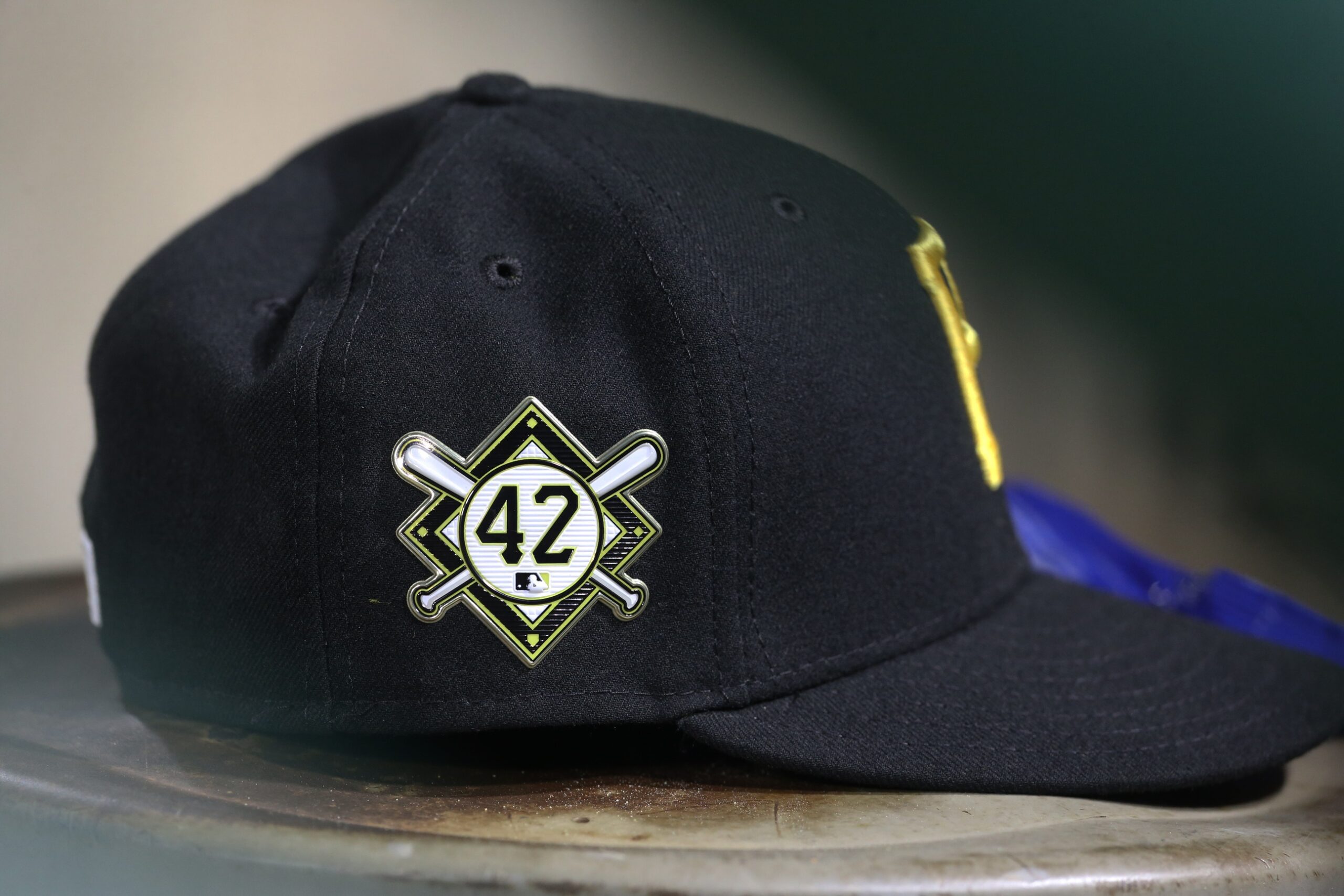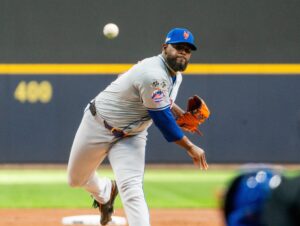On April 13, 1954, the Pittsburgh Pirates’ color barrier was broken, at least according to Major League Baseball. That’s when second baseman Curt Roberts took the field against the Philadelphia Phillies at Forbes Field. However, the Pirates’ color barrier was broken on April 22, 1953, also at Forbes Field, against the New York Giants. That’s when dark-skinned Puerto Rican Carlos Bernier pinch-hit in the eighth inning and remained to play center field.
As best as can be determined, MLB considers Roberts the first Black player to play for the Pirates because Roberts was of African American descent. At the same time, Bernier is regarded as a Puerto Rican. This line of reasoning makes no sense. The unofficial ban was based on color, not race. Furthermore, Minnie Minoso and Carlos Paula were Cubans who are recognized as breaking the color barrier on the Chicago White Sox and Washington Senators, respectively. At the same time, a Puerto Rican, Nino Escalera, is credited with being the first Black player for the Cincinnati Reds. Why them and not Bernier? So, on this Black History Month, let’s correct the record on this aspect of history.
Bernier Comes to Pittsburgh
The right-handed batting Bernier played in the minors for five years before joining Pittsburgh. His teams won five pennants during this time. In 1952, while with the Hollywood Stars, he was named Most Valuable Rookie in the Pacific Coast League. That year, he hit .301 and stole 65 bases. Fred Haney, his manager in Hollywood, also became the Pirates’ manager in 1953. Haney felt Bernier was as fast as anybody in baseball.
Bernier wasn’t a starter right away, but it was only a short time before he began to make an impact. On May 2, he had his best game in the majors, tying a record by hitting three triples in a 12-4 victory over the Reds. After that performance, he was batting .385. The Pittsburgh Press called him the hottest hitter in baseball. On May 24, Bernier hit his first major league home run into the bullpen at Forbes Field in an 11-3 loss to the Giants. Bernier continued his hot hitting with an inside-the-park homer on June 4 at home against the Chicago Cubs. His deep drive over the head of center fielder Frank Baumholtz helped beat the Cubs 6-1.
Unfortunately, Bernier spent the rest of the season in a prolonged slump after the Cubs left Pittsburgh. From June 6 till the end, he hit a mere .193/.315/.252. He finished at .213/.332/.316, 3 HR, 31 RBI, and 15 stolen bases. He also led the National League in getting caught stealing 14 times.
Getting to Know Bernier
Over the years, Bernier was a favorite interview subject of Les Biederman of The Press. In those politically incorrect times, Biederman had the unfortunate habit of quoting Bernier phonetically in broken English, as though Bernier were baseball’s equivalent of Jose Jiminez, the dim-witted Hispanic astronaut portrayed by comedian Bill Dana in the 1960s. (Roberto Clemente chafed at this practice when he joined the Pirates in 1955.) However, thanks to Biederman, we can piece Bernier’s life story together from these columns and learn about the man who broke the Pirates’ color barrier.
Bernier was born Carlos Eugene Bernier Rodriguez in Juana Diaz, Puerto Rico. He told Biederman he was 24. He wasn’t. Bernier was 26 in 1953. Presumably, the rest of his story is factual. His father was a carpenter who died very young. He had three sisters, a brother, and a stepbrother. Bernier worked in the sugar fields as a plumber’s helper as a child. At age 13, he ran away to join the Army. After 16 months, his mother informed the authorities he was underage and brought him home. His mother ensured he got a grade school education, but soon, he felt baseball’s pull. A scout discovered Bernier and began playing professionally at age 18. He held his school’s record for the fastest 75-yard dash. But his sister ran faster than him.
He was separated from his wife, with whom he had two children. His mother cared for the kids. Despite still learning English, he was an avid reader of sports books and Spalding guides. He felt comfortable conversing in English with everybody except the loquacious Branch Rickey, whom he couldn’t understand. He relaxed by listening to music. Tomatoes made him sick. He abstained from coffee.
Rickey and the Color Barrier
Rickey departed the Brooklyn Dodgers late in 1950. The Pirates immediately swept him up and hired him as their general manager. He was determined to break baseball’s color barrier while with Brooklyn; that same urgency needed to be evident in Pittsburgh. It was as if Rickey had moved on. He set about tearing down the team and starting a painful rebuilding process with which today’s Pirates fans are all too familiar.
Nearly seven years after Jackie Robinson broke baseball’s color barrier, Roberts signed with the Pirates on February 10, 1954. Roberts drew rave reviews from the Pittsburgh newspapers for his hitting and defensive play in spring training. He had a quiet personality and was well-liked by his teammates. However, after hitting .232/.309/.302 in his rookie year, he appeared in the majors only briefly in 1955 and 1956. Later, his teammates insisted he was a good hitter who never got a real chance to stick with the Pirates. Indeed, his lifetime average in the minors was .293/.318/.401, including .296/.334/.404 while Pirates property. However, the Pirates were converting a young shortstop named Bill Mazeroski into a second baseman.
Bernier in Trouble
Meanwhile, Bernier never played in the major leagues again after 1953. He was one of the last players cut in spring training in 1954 and was optioned to the Stars. On August 13, after being called out on strikes by umpire Chris Valenti, Bernier lost his temper and bumped Valenti. Bernier slapped him with his left hand when Valenti ejected him from the game. After the match, a tearful Bernier apologized to Valenti. The two men could be seen talking and shaking hands. But it didn’t save Bernier from punishment. PCL president Clarence Rowland, who was in attendance that day, suspended Bernier for the rest of the season. Bernier was Hollywood’s best player at the time, hitting .313/.392/.439. He returned home to Puerto Rico.
Bernier was back in Hollywood in 1955 and rated the fastest PCL runner. Often, he was featured in races with players from opposing teams. He told Biederman he was a new man and had remarried his ex-wife. He was on good behavior all season long for the Stars. However, in November, he was fined by the Puerto Rican Winter League for engaging in a fistfight with Vic Power. Bernier was in trouble twice more with the Stars. In 1956, it was for “popping off” at manager Clay Hopper after being removed from a game. For that, he drew an indefinite suspension. In 1957, he drew a warning for reporting late to spring training.
Blackballed From the Majors?
Bernier was bitter about how the Pirates treated him. He felt he was better than many of the outfielders they kept when they cut him each spring. He had a point. From 1954-56, these included Dick Hall, Hal Rice, Cal Abrams, Luis Marquez, Eddie O’Brien, Tom Saffell, Bobby Del Greco, and Felipe Montemayor. None hit as high as .240 during that time or ran as fast as Bernier.
Meanwhile, Bernier hit .296/.326/.417 in the minors as Pirates property. He felt blackballed from the majors for his inability to control his temper. Maybe he’s been denied his place in history as the man who broke the Pirates’ color barrier for the same reason.
Endings, Happy and Sad
From 1961-64, Bernier played for the Hawaii Islanders of the PCL and became a folk hero in Hawaii. He won the PCL batting title by hitting .351 in 1961. An appendectomy in 1964 cost him a chance at a fourth consecutive season hitting at least .300. He was hitting .294 at the time. Overall, he hit .315 as an Islander and was believed to be their greatest hitter. In a 1985 story in the Honolulu Star-Bulletin, Bernier claimed he was so popular that PCL president Dewey Soriano ordered the umpires not to toss him from games. His time in Hawaii had to have been his happiest in baseball.
Bernier played in the Mexican League in 1965 and retired from baseball at 38. He returned to Juana Diaz, where he encountered health and financial problems. Homeless, he committed suicide by hanging in 1989 when he was 60. In 2004, Bernier was inducted posthumously into the PCL Hall of Fame. In 1969, Roberts was struck by a drunk driver and killed at age 40 while changing a flat tire on the Oakland freeway. Neither death was reported in the Pittsburgh media.
Photo Credit: © Charles LeClaire-USA TODAY Sports






